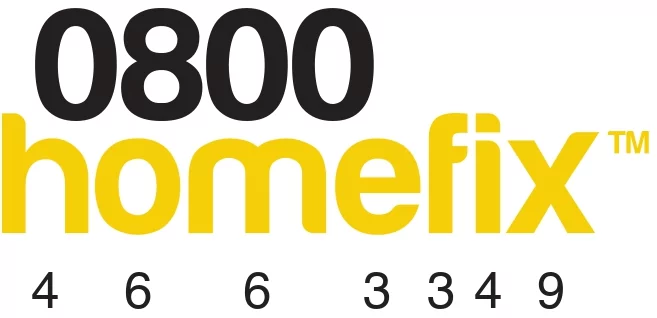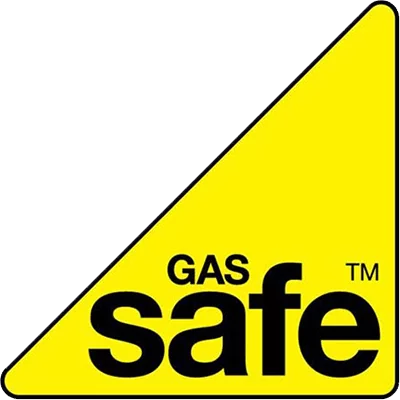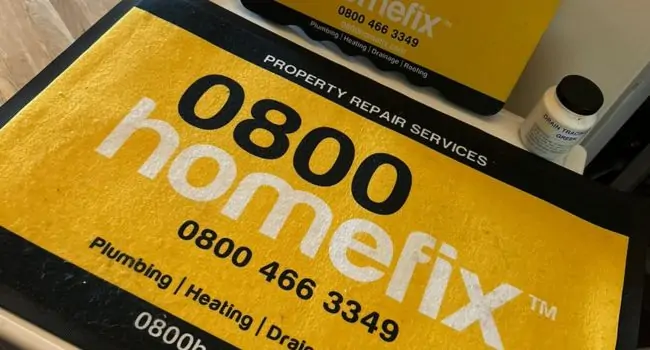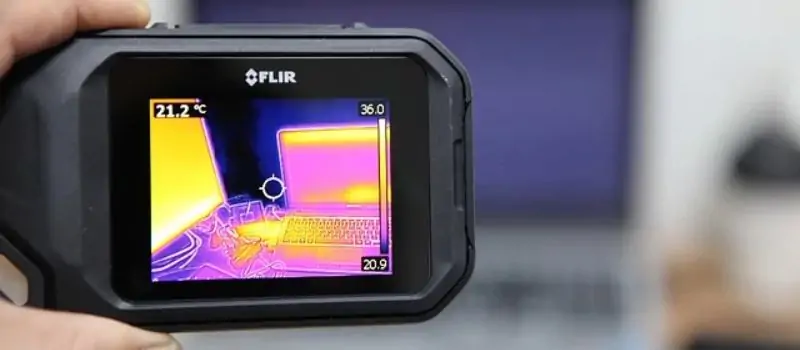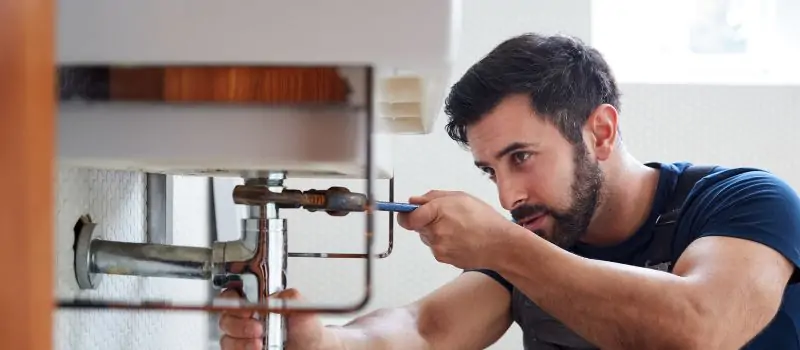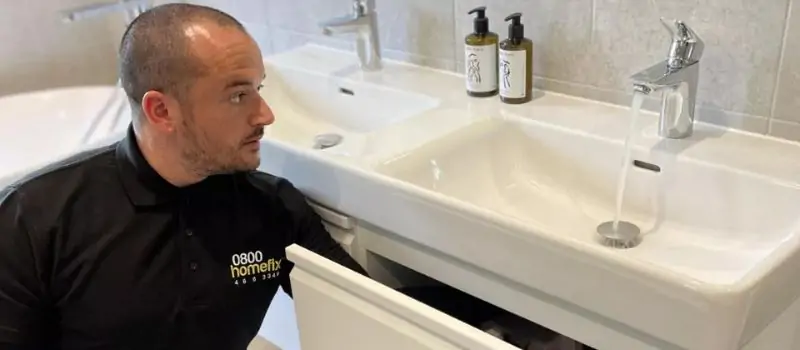Are you confronting the challenge of a hidden water leak and feel overwhelmed by the uncertainty of where to start looking? Locating elusive water leaks requires precision, knowledge, and sometimes, the right technology. In this comprehensive guide, we reveal how to track and trace a water leak, whether it involves simple auditory checks or sophisticated professional equipment. From using your senses to employing advanced detection methods, you’ll learn the necessary steps towards uncovering and fixing those costly and damaging leaks without delay.
Our Service
As Professional plumbers, we use specialised techniques and equipment such as hydrostatic and isolation testing in addition to sophisticated tools like thermal imaging cameras and acoustic detectors for accurate and non-destructive leak detection.
Trace and access methods enable pinpointing and repairing of hidden leaks with minimal damage; these include non-invasive techniques like thermal imaging and more direct methods such as employing borescope cameras when necessary.
If you are a homeowner, you can take preventive measures against water leaks by conducting regular inspections, utilising smart water leak detectors for early detection, and undertaking routine plumbing system maintenance to mitigate potential risks. A smart water leak detector combines flow and sensor-based technology to continuously monitor the flow of water into a property. It allows for the addition of wireless sensor probes in vulnerable areas, such as kitchens and bathrooms, for enhanced protection. Designed to comply with relevant water supply regulations, these detectors can automatically shut off the water supply in the event of a leak, offering an advanced solution for preventing water damage.
Detecting Water Leaks: Our Professional Techniques and Equipment
Finding water leaks within a plumbing system can be challenging as the leak often remains hidden, hidden behind walls, beneath floors, or deep in the complex web of pipes. It’s critical to uncover these elusive leaks because if left unaddressed they may cause extensive damage to your property. That is where as expert and qualified plumbers, come into play. With our specialised skills and equipment, we excel at identifying leaks accurately and swiftly.
As professionals we are adept in plumbing and have an eye for detecting even the most inconspicuous indications of leakage that might elude those without training. We use precise methods like hydrostatic testing along with isolation techniques to pinpoint the exact origin of a water leak systematically. This precision not only prevents Potential damage from occurring, but also spares homeowners from facing unforeseen expenses due to unresolved water issues. Additionally, the integration of automatic water shut-off systems that automatically shut the water supply during a leak is paramount in water leak detection, safeguarding properties from further damage.
Hydrostatic Testing
Our team often use hydrostatic testing to identify leaks in a plumbing system. This process entails filling a segment of the system with water, after which all trapped air is allowed to escape. Following this, pressure is applied within that section for testing purposes.
Essentially, the heart of hydrostatic testing revolves around observing any decreases in pressure or variations in the water volume inside the pressurised pipes. Such changes are indicative of a leak and thus serve as proof of whether or not the plumbing structures meet their designed criteria for holding water without leakage—this includes checking on pipes and hydrants within these systems.
Isolation Testing
We adeptly employ isolation testing, akin to a surgeon conducting a focused procedure, except that the subject under scrutiny is your plumbing system. This process includes cordoning off particular segments of the system, applying pressure to them, and then meticulously watching for any variations in pressure signaling the presence of a leak.
Isolation testing stands out due to its exactitude. It allows for precise identification of leaks by monitoring pressurised conditions within segregated parts of the plumbing network. As an essential element in effective leak detection strategies, this pinpointed technique facilitates quick remediation with minimal collateral harm to one’s premises.
Leak Detection Equipment
Identifying water leaks goes beyond simple techniques. It’s essential to employ the correct tools, including the increasingly important water leak detector. These detectors play a pivotal role in enhancing the accuracy and efficiency of professional leak detection efforts, by complying with regulations and potentially saving on property insurance claims through early detection of leaks. Plumbers come equipped with an array of advanced devices designed for detecting water leaks beneath various coverings and within multiple pipe types. These instruments are crucial in pinpointing leak origins precisely without causing disruption.
We make use of specific gadgets like LeakTronics among other pieces from our extensive toolkit. Thermal imaging cameras and acoustic sensors—which encompass ground microphones as well as ultrasonic detectors—are deployed by our plumbers to track down water leaks by capturing the distinct sounds they emit, even if these leaks aren’t visible at first glance. With this equipment at hand, including water leak detectors, as full qualified plumbers we can adeptly discover those elusive hidden water leaks.
Trace and Access Methods: Uncovering Hidden Leaks
We will now explore the methods used to trace and gain access to hidden water leaks, which are integral aspects of a plumber’s toolkit. These specialised techniques allow for the detection and repair of elusive leaks in a way that aims to limit any unnecessary damage to property.
Acting as detectives within the realm of plumbing, these approaches serve to reveal covert leak sources responsible for water damage while striving to keep excavation work at bay. As we proceed, we shall evaluate both non-invasive and invasive strategies employed during this process—each designed with precision in locating and addressing concealed leaks.
Non-Invasive Techniques
Utilising non-destructive approaches is essential when trying to pinpoint concealed leaks. These methods, such as thermal imaging and moisture meters, play a pivotal role in finding hidden water leaks within your property while preventing any undue destruction.
By detecting variations in temperature that occur due to the presence of dampness, infrared cameras used in thermal imaging can precisely identify leak locations inside a building, including those within central heating systems. Moisture meters complement thermal imaging by zeroing in on the exact spots where water is leaking. Other techniques like endoscopic video detection and employing tracer gases aid us in tracking down leaks within sealed pipe systems without inflicting harm upon your property’s structure.
Invasive Techniques
In cases where less disruptive methods fall short, more intrusive tactics may be necessary. These could entail digging around pipes or making incisions in walls to accurately identify the source of leaks.
Utilising borescope cameras is an example of such a technique for invasive inspection. The camera’s slender and pliable design enables it to probe through tiny holes drilled specifically to investigate suspected leak areas within confined spaces visually. Despite being more invasive, these approaches are used only as needed and with a focus on limiting damage while efficiently resolving the issue at hand.
Repair and Restoration
Detecting and tracing the leak in a leaking pipe is just half the battle won. The task is not complete until the leak is repaired and the affected area restored. This step may involve repairs to the plumbing system, structural elements, and the application of new cosmetic finishes.
The restoration process includes:
Prompt removal of standing water
Use of dehumidifiers to mitigate water damage and prepare for repairs
Sanitation of the affected area
Thorough inspection for structural damage
Engaging professional mold remediation services if mold growth is present.
Despite the restoration process being demanding and time-consuming, it remains a necessary step in mitigating the impact of water leaks and preventing future issues.
DIY Leak Detection: Tips for Homeowners
Homeowners can play an active role in detecting water leaks within their own homes, even before seeking our professional assistance. By keeping an eye out for symptoms like moisture on walls or evidence of dripping water, and tuning into the sounds of water trickling or flowing when it shouldn’t be, you could uncover possible leak issues.
Performing a simple check using your home’s water meter can reveal stealthy leaks lurking within the plumbing network. For those comfortable with technology, there’s also the option to employ a smart water leak detector that combines flow and sensor-based technology to continuously monitor the flow of water into a property. This smart water leak detector is designed to automatically switch off the water in the event of a leak and complies with relevant water supply regulations, offering homeowners peace of mind by sending timely notifications to preemptively tackle any detected leaks. The option to add wireless sensor probes in vulnerable areas, such as kitchens and bathrooms, for additional protection, enhances its utility. Let’s delve deeper into these self-help methods for spotting system leaks in your home’s plumbing infrastructure.
Visual and Auditory Clues
Often, the initial evidence of a possible water leak is detected through what we see and hear. The following visual indications may suggest that there’s a leak involving water:
Wet spots, discoloration from moisture or burgeoning mold on walls, floors, and ceilings
Accumulations of water adjacent to a wall
Alterations in color or surface character in your ceiling or wall
Abruptly appearing substantial fissures within walls
These manifestations should be taken seriously as they can point toward complications related to leaks or disruptions in water flow.
Your auditory senses could help pinpoint undetected leaks by paying attention for unusual sounds. If you catch the sound of flowing water when all faucets are off, or notice whistling noises suggestive of drips without any visible source—these could signal covert leaks. If there’s an ongoing unpleasant stench suggesting dampness might also reveal a concealed issue with leaking water inside your home.
Vigilance concerning these sensory cues enables you to get ahead of potential problems caused by unseen leakage and mitigate consequential damage promptly.
Water Meter Test
Utilising a water meter test can serve as an essential method for detecting hidden water leaks. Before initiating the test, make sure that all water usage within your home is stopped to ensure the accuracy of the reading. Observe the leak indicator on your meter during this process. Movement signifies that there’s a potential leak.
You can carry out another form of assessment by noting down and comparing meter readings in these steps:
Jot down the initial measurement from your water meter.
Refrain from using any water for some time.
Review and compare with the initial reading after this waiting period ends. An increased measure suggests there’s a leakage present, while monitoring changes when shutting off your house’s main valve can indicate whether said leakage is inside or outside.
By performing tests on your water meters regularly, not only are you likely to uncover concealed leaks, but doing so may also preempt substantial damages caused by water and help dodge unexpected high costs related to it – effectively safeguarding both property and wallet alike.
Checking Appliances and Fixtures
Appliances and fixtures within your home could be potential sources of water leaks. Consistent monitoring is key to uncovering leaks promptly, avoiding subsequent water damage. For example, you can check if your toilet has a leak by adding food coloring to the tank. Should the color seep into the bowl after 30 minutes without flushing, this indicates a leak.
Proactively examining spaces beneath sinks and around your water heater, as well as looking for any pools of water near appliances may reveal hidden leaks. Routine inspections of faucets are also advised to spot any dripping early on — such issues can usually be resolved by stopping the supply of water, evaluating and cleansing or swapping out the washer if it’s found impaired due to debris or wear.
When dealing with more complex problems like a leaking shower head though, shutting off its main supply and dismantling parts including handles might become necessary in order to replace components like cartridges that have gone faulty. Should minor leakage hint at broader underlying issues, getting in touch with us is recommended for assessment and repair.
Preventing Water Leaks: Maintenance and Monitoring
Following the wise saying that prevention surpasses cure, this principle is particularly pertinent when dealing with water leaks. Addressing leaks promptly is crucial. Averting their occurrence altogether carries even more importance. In this light, incorporating smart water leak detectors into your leak prevention strategy is essential. These devices combine flow and sensor-based technology to continuously monitor water flow, offering the option to add wireless sensor probes in areas like kitchens and bathrooms for extra security. They are designed to automatically shut off the water supply in the event of a leak, ensuring compliance with water supply regulations. Neglected water leaks can precipitate severe problems such as structural damage, health hazards due to mold growth, and escalated water bills.
Consistent maintenance and surveillance of your plumbing infrastructure are instrumental in thwarting the emergence of water leaks. This entails frequent inspections of appliances and fixtures within your property, performing tests using your water meter for signs of leakage, and employing advanced leak detectors designed to alert you early on about any breaches in the system. Let’s dive in. In these proactive strategies to safeguard against unwanted flows in our plumbing networks.
Plumbing System Maintenance
To prevent water leaks, it is essential to conduct routine maintenance on your plumbing system. Such maintenance should encompass:
Keeping an eye on the water pressure
Tackling any corrosion problems that may arise
Securing tight connections within PPR-C piping systems
Searching for and attending to cracks in flexible hoses
Changing out faucet cartridges and seals at regular intervals.
An annual check-up of your plumbing by 0800 Homefix, alongside ongoing vigilance, can lead to early identification and remedy of areas prone to leaking. Choosing robust materials of superior quality for use in your plumbing configuration and ensuring their expert installation are also preventative measures against leak development.
Maintaining a rigorous schedule for checking up on your system not only wards off potential damage due to leaks, but also promotes the longevity of both pipes and fixtures within your plumbing network.
Smart Water Leak Detectors
In the age of intelligent home automation, it’s worth considering an advanced approach to leak detection. Intelligent water leak detectors are sophisticated devices designed with capabilities to:
Track your consumption of water.
Send timely notifications that assist in early detection of leaks through a variety of means including push notifications, emails and text messages.
Emit loud alarm sounds as part of their alert system.
Feature automatic water shut-off to automatically shut the water supply in case of leaks, enhancing their water leak detection capabilities.
These state-of-the-art smart water leak detectors typically come equipped with features such as:
Being powered by batteries allows them to stay active even in the absence of electricity from power sockets.
Recognised by insurance companies for contributing towards preventive measures like cutting off the main water supply automatically when detecting a leakage.
The ability to shut down appliances linked via smart plugs autonomously, thereby reducing risks associated with potential water damage should leaks occur.
With hassle-free installation processes and user-friendly interfaces, these automatic systems act as vigilant guardians against unwanted escapee drizzles or torrents within homes—effectively guarding against incidents before they escalate into more severe issues related to moisture intrusion.
When to Call a Professional Plumber Like us..
In cases where your own efforts to identify a leak, such as observing the water meter or surveying the base of your home, prove fruitless, it’s essential to consult with a professional plumber. Enlisting the skills of experts is particularly crucial for leaks beneath slab foundations that have potential to undermine structural integrity and necessitate immediate plumbing attention.
When dealing with severe water troubles or intricate issues pertaining to a central system, professional plumbers are indispensable. Attempting DIY repairs on pressurised lines may lead to increased flooding risks and consequent water damage. Hence calling in professionals becomes critical. Emergency plumbing services. Offer quick responses which are instrumental in reducing hazards presented by unforeseen leaks.
Signs of a Serious Leak
If your water bill is consistently high despite unchanged usage patterns, this could be a red flag pointing to a significant leak in the plumbing system that may involve a compromised water pipe. In such cases, it’s wise not to rely on DIY solutions and instead seek immediate assistance from an expert plumber.
Telltale signs like warped walls or ceilings with water marks, as well as discolored paint and floors that buckle are indicative of an extensive water leak within the system. Should you encounter ongoing moisture issues leading to mold or mildew formation, musty odors, or visible stains caused by water—these too suggest leaks which merit intervention from 0800 Homefix without delay.
Benefits of Hiring 0800 Homefix
Hiring one of our plumbers, although it might seem like an unnecessary expense, is actually beneficial in the long run as we thoroughly evaluate your plumbing system to spot and repair any potential weak points before they lead to major problems.
Our skilled plumbers offer guarantees on their services, which provides homeowners with additional reassurance about the durability and dependability of their repairs or new installations. They are also equipped with high-quality tools and materials that help ensure more lasting and efficient fixes to your plumbing issues.
In essence, when you engage 0800 Homefix’s plumber’s services, you’re making an investment into your home’s well-being while also potentially mitigating future expenditures related to Repairs or claims with your insurance company.
Summary
To sum up, while water leaks are a frequent occurrence, they can lead to considerable damage if not identified or rectified promptly. Specialised skills and equipment possessed by our professional plumbers are essential in discovering and fixing these leaks. Homeowners themselves can contribute to leak detection and prevention through do-it-yourself methods and consistent maintenance routines.
Staying alert and proactive is vital in averting water leaks. Knowing when it’s time to enlist the expertise of a professional is just as critical. Bear in mind that your dwelling is a haven worth protecting at all costs from the destruction caused by unchecked water leakage!
Frequently Asked Questions
What is covered under trace and access?
How do I find a water leak in my house UK?
Examine your residence for any indications of moisture or discoloration on ceilings, walls, or floors. Look out for soggy areas in your garden as well. Be alert to low water pressure and abnormal sounds emanating from the plumbing system. Keep an eye out for evidence of mold or mildew and be aware of any persistent musty odors.
These checks can help you detect a water leak within your UK home effectively.
Is there a tool to detect water leak?
Certainly, plumbers are equipped with tools such as listening discs and ground microphones that enable them to identify and locate water leaks precisely, even when these leaks are hidden behind drywall or furnishings.
Rest assured, there exists sophisticated equipment designed specifically for the accurate detection of water leaks within your home. Among these, the smart water leak detector stands out as a highly effective tool for homeowners. It combines flow and sensor-based technology to continuously monitor water flow into a property, with the option to add wireless sensor probes in areas most vulnerable to leaks, such as kitchens and bathrooms. This advanced system is designed to automatically shut off the water supply in the event of a leak, ensuring compliance with relevant water supply regulations and offering peace of mind.
Is a leaking pipe considered an emergency?
Indeed, a pipe that is leaking constitutes an emergency in the realm of plumbing and necessitates prompt attention from a professional plumber.
How can you fix a dripping tap?
To address the problem of a leaking faucet, one should cut off the water supply, evaluate and cleanse the washer, and substitute the faulty tap if necessary. Implementing these steps will typically rectify the situation and halt any Dripping.
